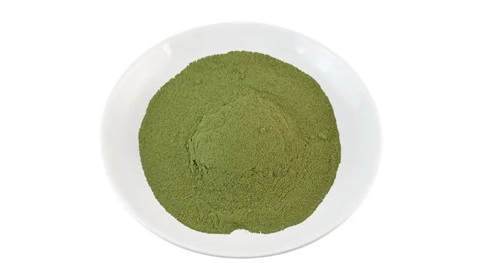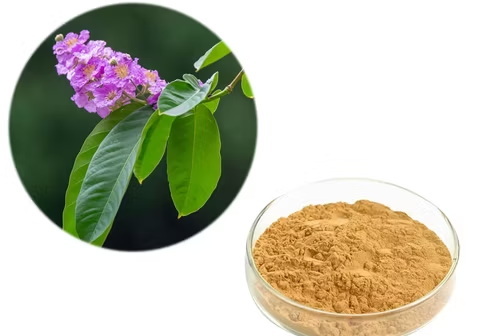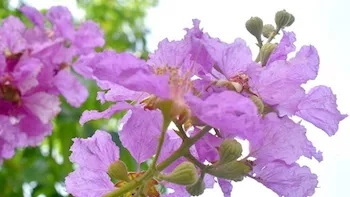Content Menu
● Introduction to Banaba Leaf Extract
>> Cultivation of Banaba Trees
>> Soil Selection and Preparation
● Sourcing Banaba Leaves
>> Harvesting Banaba Leaves
>> Drying and Storage
● Extraction Methods Used by Banaba Leaf Extract Makers
>> Microwave-Assisted Solvent Extraction (MASE)
>> Hot Water Extraction
>> Supercritical Fluid Extraction (SFE)
● Quality Control and Analysis
>> High-Performance Liquid Chromatography (HPLC)
>> Gas Chromatography-Mass Spectrometry (GC-MS)
● Applications of Banaba Leaf Extract
>> Pharmaceutical Industry
>> Dietary Supplements
>> Cosmetic Industry
● Challenges Faced by Banaba Leaf Extract Makers
>> Sustainability and Environmental Impact
>> Regulatory Compliance
● Future Prospects for Banaba Leaf Extract Makers
>> Research and Development
>> Market Expansion
● Conclusion
● FAQs
>> 1. What is the primary active compound in banaba leaf extract?
>> 2. How do banaba leaf extract makers typically extract the active compounds?
>> 3. What are the common applications of banaba leaf extract?
>> 4. What challenges do banaba leaf extract makers face?
>> 5. How is the quality of banaba leaf extract assessed?
● Citations:
Banaba leaf extract has gained significant attention globally for its antidiabetic and antiobesity properties, primarily due to the presence of corosolic acid, a triterpenoid compound. This extract is sourced from the leaves of the Lagerstroemia speciosa tree, commonly found in India, the Philippines, and Vietnam. The sourcing process involves several steps, from cultivation to extraction, which are crucial for maintaining the quality and efficacy of the final product.

Introduction to Banaba Leaf Extract
Banaba leaf extract is renowned for its health benefits, including enhancing insulin sensitivity and reducing blood sugar levels. The active compound, corosolic acid, plays a pivotal role in these health benefits by stimulating glucose uptake in cells.
Cultivation of Banaba Trees
Banaba trees are typically cultivated in tropical regions where they thrive in warm climates. The cultivation process involves careful selection of soil, climate conditions, and pest management to ensure healthy growth.
Soil Selection and Preparation
The soil for banaba tree cultivation should be well-drained and rich in nutrients. Farmers often use organic fertilizers to enhance soil fertility and promote healthy root development.
Sourcing Banaba Leaves
Sourcing high-quality banaba leaves is essential for producing effective extracts. This involves selecting mature leaves with optimal levels of corosolic acid.
Harvesting Banaba Leaves
Leaves are harvested at the peak of maturity to ensure maximum potency. Harvesting is often done manually to avoid damaging the leaves.
Drying and Storage
After harvesting, the leaves are dried to remove excess moisture. Proper storage conditions are crucial to maintain the potency of the leaves until they are processed.
Extraction Methods Used by Banaba Leaf Extract Makers
Banaba leaf extract makers employ various extraction methods to obtain the active compounds from the leaves. The choice of method significantly affects the yield and quality of the extract.
Microwave-Assisted Solvent Extraction (MASE)
MASE is a popular method due to its efficiency and environmental friendliness. It involves using solvents like ethanol and ethyl acetate under microwave conditions to extract compounds from the leaves.
Hot Water Extraction
Hot water extraction is another method used, especially for its simplicity and cost-effectiveness. This method involves soaking the leaves in hot water to release the active compounds.
Supercritical Fluid Extraction (SFE)
SFE is a modern method that uses carbon dioxide as a solvent to extract compounds. It is preferred for its ability to produce solvent-free extracts.

Quality Control and Analysis
After extraction, the quality of the banaba leaf extract is assessed through various analytical techniques to ensure it meets the required standards.
High-Performance Liquid Chromatography (HPLC)
HPLC is used to identify and quantify corosolic acid in the extract. This ensures that the extract contains sufficient amounts of the active compound.
Gas Chromatography-Mass Spectrometry (GC-MS)
GC-MS is used for a more detailed analysis of the extract's composition, helping to identify other potential bioactive compounds.
Applications of Banaba Leaf Extract
Banaba leaf extract is used in various industries, including pharmaceuticals and dietary supplements, due to its health benefits.
Pharmaceutical Industry
In the pharmaceutical industry, banaba extract is used to develop antidiabetic medications and supplements.
Dietary Supplements
As a dietary supplement, banaba extract is marketed for its potential to support weight management and blood sugar control.
Cosmetic Industry
Banaba extract is also used in the cosmetic industry for its antioxidant properties, which can help protect the skin from oxidative stress.
Challenges Faced by Banaba Leaf Extract Makers
Despite the benefits of banaba leaf extract, manufacturers face several challenges, including sourcing high-quality raw materials and maintaining consistency in the extraction process.
Sustainability and Environmental Impact
Ensuring sustainable cultivation practices and minimizing environmental impact are crucial for the long-term viability of banaba leaf extract production.
Regulatory Compliance
Manufacturers must comply with regulatory standards to ensure the safety and efficacy of their products. This includes adhering to Good Manufacturing Practices (GMP) and obtaining necessary certifications.
Future Prospects for Banaba Leaf Extract Makers
As interest in natural health products continues to grow, the demand for banaba leaf extract is expected to increase. This presents opportunities for manufacturers to expand their operations and invest in research and development.
Research and Development
Continued research into the health benefits of banaba leaf extract could uncover new applications and enhance its market appeal.
Market Expansion
Banaba leaf extract makers can explore new markets, particularly in regions with growing interest in natural health products.
Conclusion
Banaba leaf extract makers source their ingredients through a meticulous process that involves cultivating high-quality banaba trees, harvesting mature leaves, and employing efficient extraction methods. The quality of the extract is crucial for its effectiveness, and manufacturers must adhere to strict quality control measures. As demand for natural health products continues to grow, the importance of sustainable sourcing practices will become increasingly important for the industry.

FAQs
1. What is the primary active compound in banaba leaf extract?
The primary active compound in banaba leaf extract is corosolic acid, which is responsible for its antidiabetic and antiobesity properties.
2. How do banaba leaf extract makers typically extract the active compounds?
Banaba leaf extract makers typically use methods like microwave-assisted solvent extraction (MASE) or hot water extraction to obtain the active compounds from the leaves.
3. What are the common applications of banaba leaf extract?
Banaba leaf extract is commonly used in the pharmaceutical industry for developing antidiabetic medications and as dietary supplements for weight management and blood sugar control.
4. What challenges do banaba leaf extract makers face?
Banaba leaf extract makers face challenges such as sourcing high-quality raw materials, maintaining consistency in the extraction process, and ensuring sustainable cultivation practices.
5. How is the quality of banaba leaf extract assessed?
The quality of banaba leaf extract is assessed through analytical techniques like high-performance liquid chromatography (HPLC) to ensure it contains sufficient amounts of corosolic acid.
Citations:
[1] https://animorepository.dlsu.edu.ph/etd_masteral/6891/
[2] https://patents.google.com/patent/CN105456132A/zh
[3] https://www.ncdc.in/documents/downloads/06180405202.Sample-DPR_-Banana-Fibre-Extraction-and-Weaving.pdf
[4] https://www.mohw.gov.tw/dl-28468-df165deb-0d70-41b5-b31b-9632e7c13e8a.html
[5] https://patents.google.com/patent/JPWO2005099486A1/en
[6] https://patents.google.com/patent/CN106418093A/zh
[7] https://www.botanichealthcare.net/news-and-blog/what-is-banaba-extract-and-how-does-it-work.html
[8] https://patents.google.com/patent/CN110734932B/zh






























